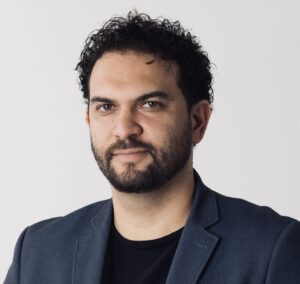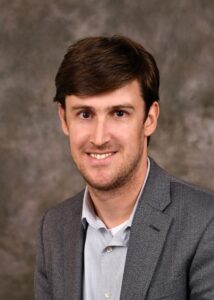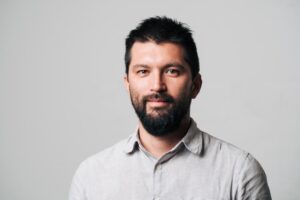An experimental study carried out in partnership between academia, a Brazilian newspaper and a consulting company showed that sending an alert email and offering a free subscription to a news outlet for three months was able to reduce belief in fake news.
The experiment was carried out in São Paulo, between November and December, by political scientists Felipe Nunes, from the Federal University of Minas Gerais (UFMG); Nara Pavão, from Federal de Pernambuco (UFPE); and Fred Batista, from the University of North Carolina in Charlotte, in partnership with Quaest and Folha de S.Paulo.
The study, which interviewed 1,000 people, aimed to find a kind of vaccine against false news, especially during the electoral period – in this case, during the 2020 municipal elections.
The initial group was divided into two, with 500 people each, so that one received the "treatment,” and the other, without intervention of the research team, functioned as a control. The groups were chosen in order to statistically represent the electorate of the city of São Paulo, according to gender, age, income, education, religion, among other characteristics. The vote of respondents in the 2018 presidential elections was also considered, to ensure that the proportion of people more aligned to the left or right, for example, would be the same as that of the São Paulo electorate.
Then, the researchers showed them two rounds of four stories each, labeled as false by fact-checking agencies, but the respondents were not informed about this classification. The data collected in the first round served as a reference for comparison with the second stage.

Felipe Nunes, professor of UFMG and director of Quaest
Between rounds, the treatment group received an email, which contained simple tips on how to spot fake news and an alert message ("ATTENTION !!!"), which asked the reader to check content before sharing and join the fight against fake news. The email also contained an article from Folha about the newsletter that the newspaper had launched to fact-check false news. In addition to the email, the treatment group received a free subscription to the newspaper for three months.
The study is still ongoing and, as a result, there is still no final paper, but preliminary data were published by Folha in January. According to this initial result, 65 percent of respondents in the control group considered at least one of the false news items to be true in the second round of interviews. In the group that received the email and subscription, this percentage was significantly lower, at 46 percent.
At the same time, the comparison within the treatment group, before and after receiving the alert email and the subscription, also indicated that belief in fake news fell eight percentage points, Felipe Nunes, one of the study's authors, told LatAm Journalism Review (LJR). "The two results are complementary and reinforce the finding of the study," said Nunes, who is a professor of political science at UFMG and director of the consultancy Quaest.
Another interesting point of the research is that a false news item, which said that Rede Globo belonged to three Arab countries, was shown twice, in the first and second rounds. And, initially, the percentage of people who considered that content true was the same in both groups, about 20 percent. In the second round, this percentage dropped to 12 percent in the group that received the email and subscription, another indication of the effectiveness of the treatment. Meanwhile, in the control group the opposite occurred, more people started to believe the false news: 39 percent.
"With this, we know that the effect of repeating the same false news, if people are not 'vaccinated' [did not receive treatment from the research], is that they tend to believe more in this false content,” Nunes pointed out.
After identifying that the joint treatment was effective, the researchers now investigate the weight of the email and the newspaper's subscription in reducing the belief in fake news.
"The evidence we have today, but it is not yet conclusive, because this part of the study is not entirely ready, [...] is that the effectiveness of the email was very great. The greatest effect is among those who stopped, opened and read the email. Also because, in the case of the subscription, the percentage of people who used the voucher was very low," Nunes said.
Of the 500 people in the treatment group, 272 opened the email. Of those 500, 53 completed the subscription registration, 12 of which used the voucher to read an article.
"In other words, the simple fact that people are informed that they have received the free subscription to Folha and then receive the email already helps in the process of detecting fake news. We interpret that the person is motivated to look for problems. But for those who in fact read the email and receive the information, then the effect is even greater. We do not yet have a specific conclusion as to what the most absolute effect is, but we think there is a little mixture,” Nunes explained.
The professor cited another point in the same study, which shows a correlation between the frequent consumption of news from a few particular outlets, such as Folha, UOL and Rede Globo, and a tendency to believe less in false content.
"I mean, it seems that those who least believe in fake news are those who read these newspapers. There seems to be a profile of a person that looks for these outlets to be informed, but that does not mean that it is because they read these newspapers that they believe less in fake news, these things are all mixed,” he said.
Fred Batista, professor of political science at the University of North Carolina at Charlotte, who is also an author of the study, said the general treatment worked, but that the email had a greater effect.
"Yes, it is the email that is doing the heavy lifting. Which raises some questions. We know that the intervention worked, it reduced the belief in fake news, but does it promote media literacy or is it more of an alert campaign?” he said, in an interview with LJR.
What Batista is questioning is whether the email was able to teach respondents to effectively discern false content from real content or if it just generated an alert, leaving readers more aware in general. With that, it is possible that the respondents have even become more suspicious of the real news, Batista explained.
"We did not test this, [to know] if it was media literacy, which is learning, the ability to distinguish the true from the false, or if it was simply an alert," said Batista, who wants to include real news in the next surveys to better understand this issue. However, he said the experiment included other tests, such as confidence in the press, which has not increased with treatment.
"We also measured attitudes towards fact-checking and nothing has changed. So I understand that it worked as an alert and not a learning experience, but of course our evidence about it is indirect," Batista said.

Fred Batista, University of North Carolina at Charlotte.
Either way he said the research points to possible ways on how to deal with fake news. If the treatment was just an alert, Batista said that it shows how the State, the judiciary and the press can carry out awareness campaigns against false news during more critical periods, such as elections.
On the other hand, if the research intervention had the effect of media literacy, that would be a positive sign to increase investment in public policies in this regard.
"If literacy is happening, it is very likely that stronger interventions, such as at school, will have a greater effect than that," Batista said.
According to the researchers, the result goes in the same direction as the group's previous findings, on the effectiveness of debunking false news. In 2018, another study by the same academics indicated that corrections and fact-checks had little impact on people's belief in fake news during the election period.
According to Nunes, it was clear that denying false news, either as a form of self-defense, or through fact-checking mechanisms, was not enough to change the respondents’ opinions.
"People have a confirmation bias, they are more concerned with confirming an opinion that they already have, in order to be right, than reflecting on the data to form a more informed opinion. Basically, people are not exposed to these checks and even the ones that are exposed do not change their position, that is, the way is to help people to make decisions for themselves. When you try to influence, it is less effective. They need to draw their own conclusions,” Nunes said.
Batista followed the same reasoning. "Nobody stops believing because they saw a correction. In other words, there is no way to attack the symptom once it manifests, because the beliefs are highly partisan. This time, I think the research suggests that it is best to treat it before, to generate immunity, with an educational measure, make people more skilled and alert to this problem," he said.
Batista stressed that it is not enough just to teach how to identify hoaxes, it is also necessary to explain the characteristics of true content, as well as what is a report, a column, an editorial etc.
For the editor of the Folha de S. Paulo data journalism team, Fábio Takahashi, who reviewed the methodology and helped to elaborate the study's questions, the issue of false news is complex and will not be solved with just one solution.
"What is interesting about the research is that, if we reach people, we have an effect, this is the positive part. Now there is a huge challenge on how to reach people. We will have to, as an industry, think about better ways of doing this. And the other way is to use media education to show how important the work of the professional journalist is. The two sides still need to be developed thoroughly," Takahashi, the founder and president of Jeduca (Association of Education Journalists), told LJR.
Likewise, including tips in articles on how to spot hoaxes is one of the possible measures, but it isn’t a silver bullet, Takahashi argued.

The editor of the Folha data journalism team, Fábio Takahashi.
"Media literacy has more impact, but it takes longer to take effect. Reporting on tips, for those who end up reading the story, I think will have a quick effect, but how do you attract a person to click on a link like that? Such a story will not be among the most-read, the most seductive. So I think there are several shots that we need to take, it won't be just one," said the journalist, who coordinates the podcast and newsletter Folha na Sala, aimed at teachers.
Partnership between newspaper, academy and consultancy
The research was only possible thanks to an unusual partnership between academia, a newspaper and a consultancy. Folha provided free subscriptions to the treatment group, and Quaest consultancy covered the costs of conducting the interviews and applied the questionnaire. The study was developed by the academics, and the survey design was submitted and approved by three ethics committees from two U.S. universities and one from Brazil.
Planned since July 2020, the research benefited from a previous relationship between Quaest and Folha. They had been working together since 2019, in the dissemination of a tool developed by Nunes, the digital popularity index. With that, there was already confidence and a good workflow established when the idea of the research on false news came up.
"We were very satisfied with the result, we had good journalistic material [to publish]. And it cannot be overlooked that it was a positive institutional effect for Folha, UOL, Globo, for the professional press as a whole," Takahashi said.
Nunes said he sought Folha for the project "for its credibility, large circulation and relevance in Brazil.” Batista said that, without the newspaper, the study would have been very expensive and probably unfeasible. "It was a partnership, it wasn't that one hired the other, there was a contribution from all parties,” he said.
Batista also pointed out that this was an opportunity to conduct a field experiment, something that is rare in academic research in political science and communication in Brazil. "It is a type of study that is difficult to do, because it involves an experiment with treatment and control. In this area of fake news it is very rare, they are very few. I think that in Brazil it is unprecedented.”
For him, the press and academia should invest more in partnerships, especially in the current context.
"We brought together two groups that are threatened, professional journalists and scientists. It has been increasingly common for newspapers and magazines to partner and spread science. In our case, we have taken the reverse path, we have done a scientific study on the effect of professional journalism.”
The researchers intend to continue investigating the topic and to establish a center for studies on disinformation in Brazil. Last year, the group obtained approval to carry out a larger study on false news in the country, with 5,000 respondents, which will receive funding from Facebook.